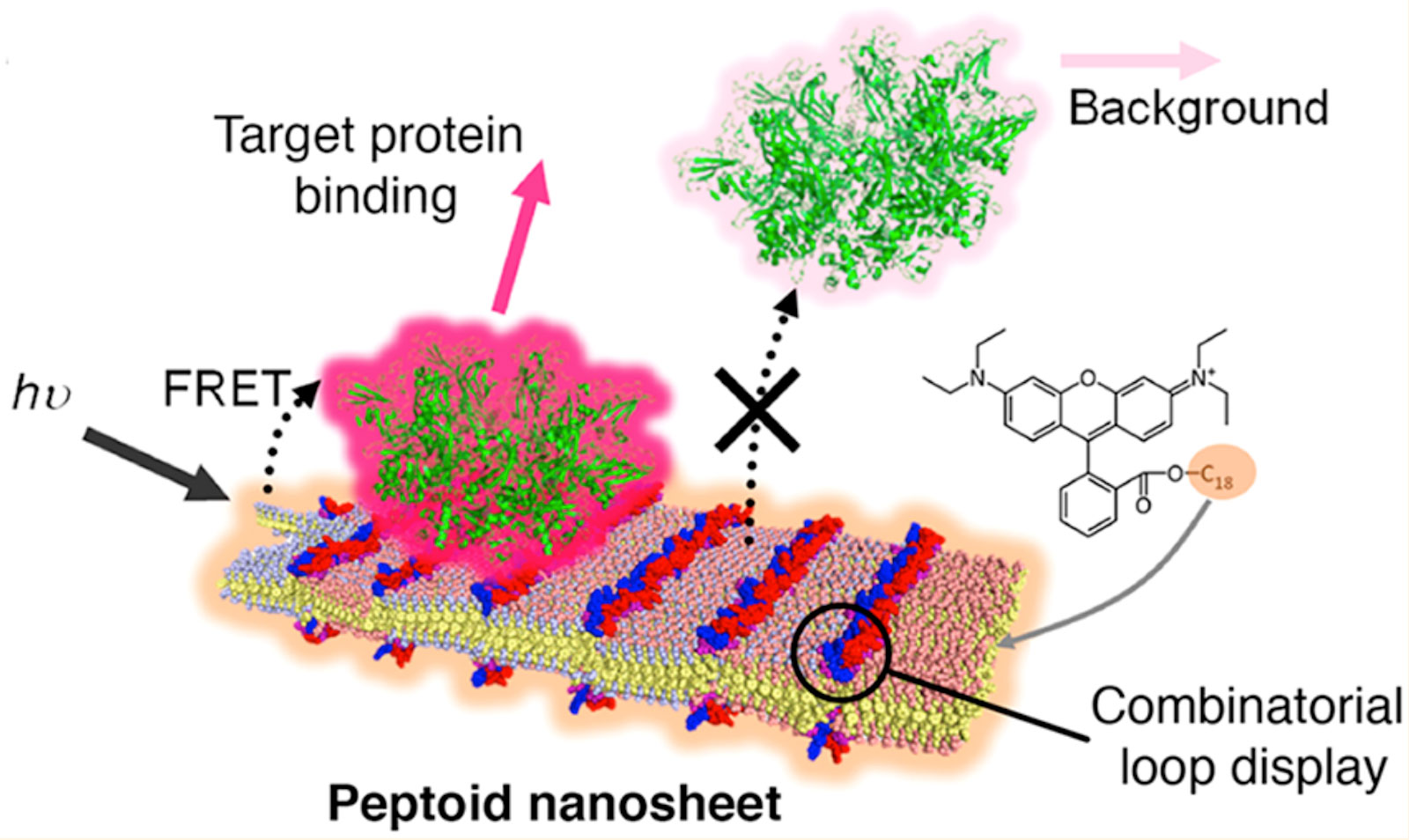New Data Libraries Open a New Chapter in Designing Compounds that Mimic Antibodies
Synthetic materials can be engineered to recognize potential pathogens.

The Science
Researchers developed a new method to synthesize and screen libraries of peptoid nanostructures. Peptoids are artificial peptides, chains of amino acids that play many roles in plants and animals. The data libraries enable researchers to design structures that can target a bacterium, virus, or other microorganisms that can cause disease.
The Impact
This is the first rapid method for synthesizing and discovering compounds that can act like antibodies. It will help scientists quickly discover polymers inspired by biological materials. These materials will selectively bind to a pathogen or other target. The ability to quickly design new ‘smart’ materials has many potential applications. These include defense, environmental cleanup, and biomedicine.
Summary
Antibodies can bind a wide variety of pathogens and chemical species with high specificity and high affinity. This makes them ideal candidates for therapeutic and diagnostic applications. However, antibodies have poor stability and are costly to produce. This has prompted scientists to explore a variety of synthetic materials capable of specific molecular recognition. Researchers face a fundamental challenge – how to create a chemically diverse population of protein-like, folded synthetic nanostructures with defined molecular conformations in water.
This new research by a multi-institutional team including staff from the Molecular Foundry user facility synthesized and screened combinatorial libraries of sequence-defined peptoid polymers engineered to fold into ordered nanosheets displaying a high density of diverse peptoid loops on their surface. The researchers screened loop-functionalized nanosheets to identify molecular sequences that bind to a variety of protein targets, including an anthrax protective antigen, a toxin-related protein. Using automation for synthesis, assembly, and screening provides a scalable strategy for generating and screening large chemical libraries, synthesizing materials with high and selective binding affinities, and the ability to immediately scale up production. These properties should allow for the rapid discovery of recognition elements for target molecules and have an impact on many applications such as sensing, biomedicine, and environmental remediation.
Contact
Ron Zuckermann
Molecular Foundry, Berkeley Lab
rnzuckermann@lbl.gov
Funding
This research was supported by the DARPA Fold F(x) program. Portions of this work were conducted at the Molecular Foundry at Lawrence Berkeley National Laboratory, a Department of Energy Office of Science user facility.
Publications
Kim, J.H., et al., Discovery of Stable and Selective Antibody Mimetics from Combinatorial Libraries of Polyvalent, Loop-Functionalized Peptoid Nanosheets. ACS Nano. 14(1), (2020). [DOI: 10.1021/acsnano.9b07498]
Related Links
Molecular Foundry news: Opening a New Chapter in Antibody Mimetics
Highlight Categories
Performer: University , DOE Laboratory , SC User Facilities , BES User Facilities , Foundry
Additional: Collaborations , Non-DOE Interagency Collaboration



